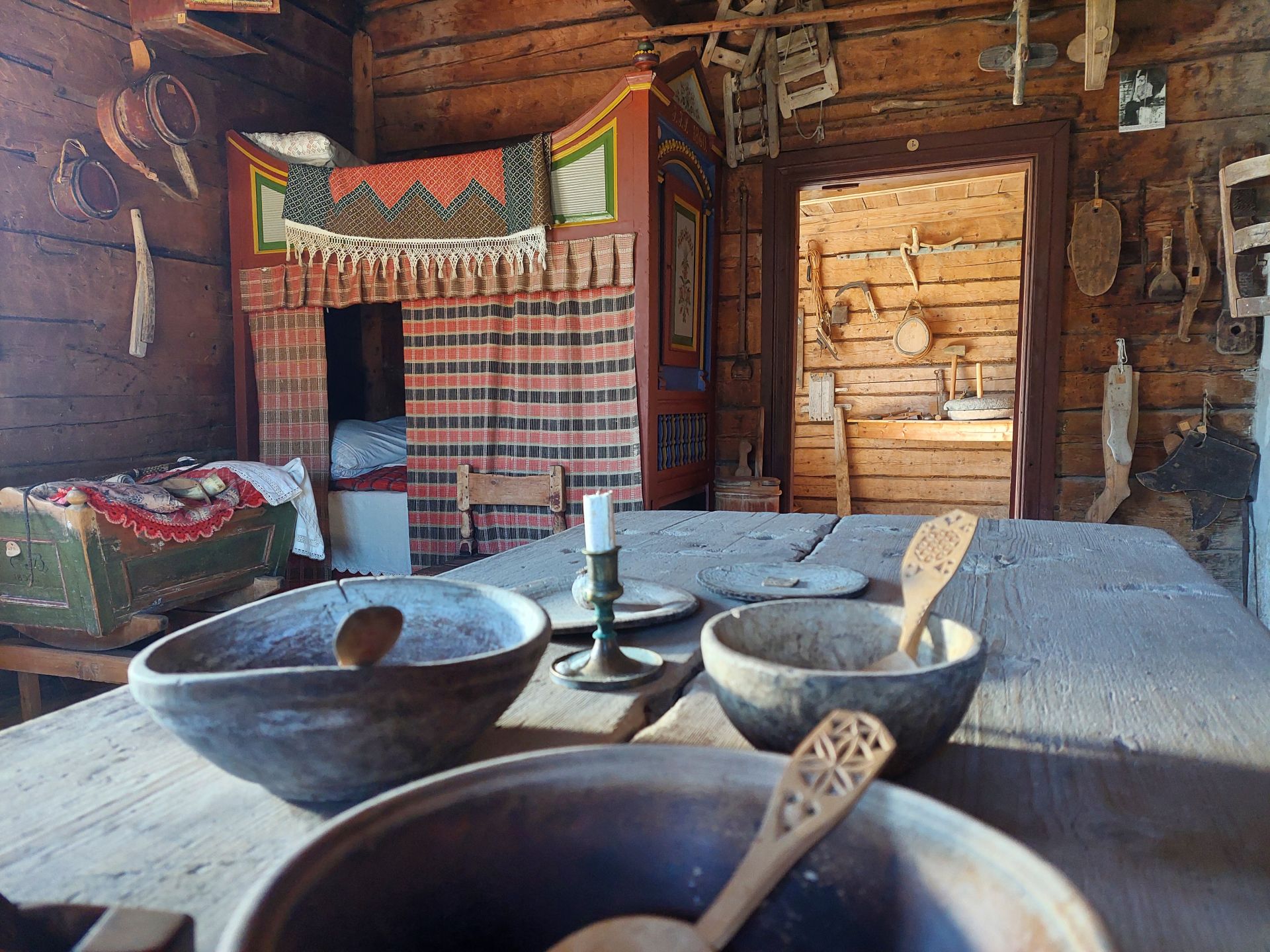Soldier's cabin
The small red cabin on the right side of the road, is the Soldier’s cabin. It is the oldest house in the village, but was not built here. In the early 1700s, the island was used by the russian army to repair their naval ships, and no wood was left to build houses. The cabin was brought from the mainland in 1791. When Björkö fornminnesförening was founded in 1928, the cabin was donated to be used as a museum - the village’s first.
The cottage is most famous for housing Russian Cossack Major Kiseleff the night before he and his army attacked Sweden in 1809.
Nils Krok, an old soldier from the High Coast in the 1780s, was fishing with his daughter Brita when a storm took them by surprise. Their boat was found in Pudimo near Tottesund, Nils and Brita were nearly dead. They were brought to Tottesund Manor and were well taken care of. Brita got a job at Tottesund and fell in love with the illegitimate son of the owner of Tottesund, Erik Löfdahl. They got married and received, as a wedding gift, a house in Björkö, the cabin that is now the local history museum.
In the winter of 1809, Björkö was occupied by Russians who were to march to Sweden. About 3000 Russians under the command of General Barclay de Tolly were in the village and lived in about 35 households. The villagers slept in the cowsheds and moved the cattle to the forest. The Russians used up all the hay and food.
When the Russians were about to march over the ice to Sweden, they had to spend the night at Valsörarna (Valassaaret) under the open sky. During the night, almost 200 men froze to death. When they finally reached Umeå on March 22, word came that King Gustav IV Adolf had been deposed. The Russian troops marched into Umeå after the Swedish troops left the city. Then, a message of a ceasefire came and orders to return across the Kvarken. On March 27, Barcley de Tolly marched from Umeå, and on April 1, the troops were back in Björkö. Over 1000 med died during the march across the ice, and de Tolly said, “You don’t have to mark the way across the Kvarken, I have done it with the corpses of my soldiers.”
The last remains of the Russians were collected in 1936 at Valsörarna and buried under a stone monument on Ebbskär. You can find the whip of Barcley de Tolly’s coachman preserved in our museum.

.jpg)